Motorcycle Investor mag
Subscribe to our free email news
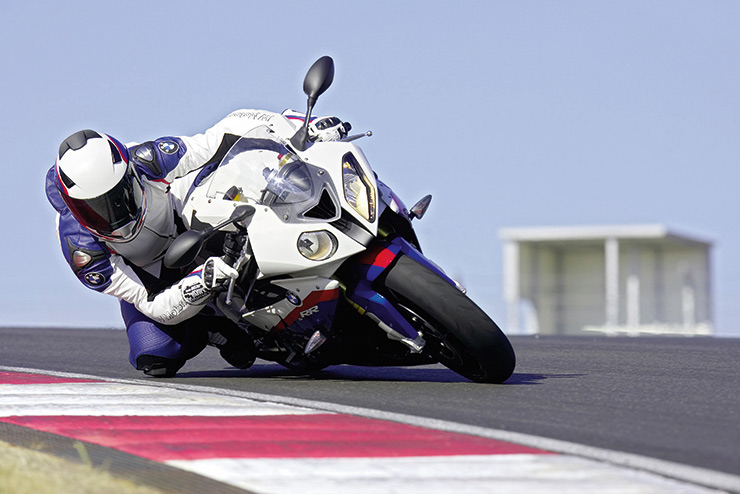
Future collectible – gen 1 BMW S 1000 RR
August 2020
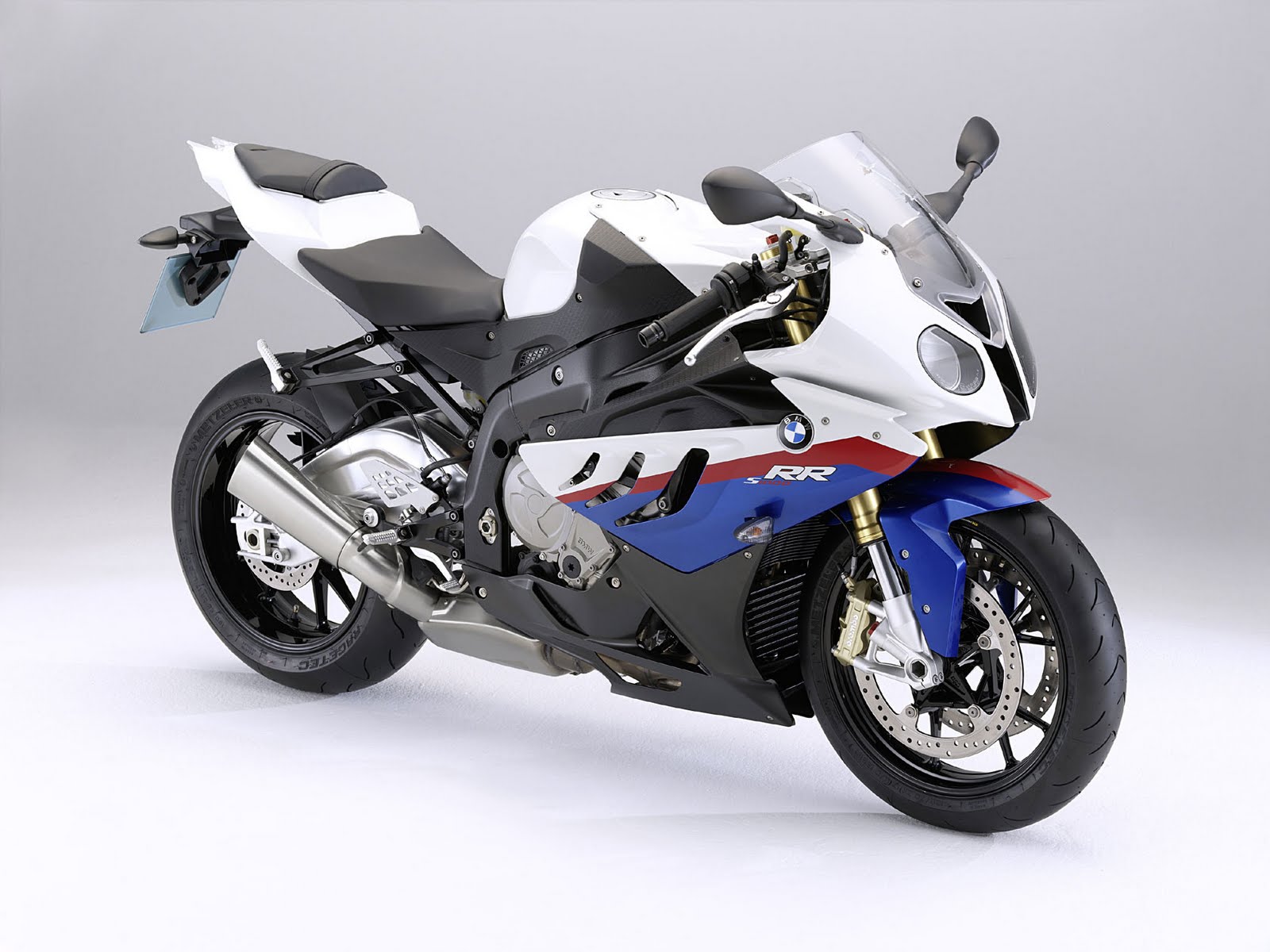
Bombshell Bimmer
by Guy 'Guido' Allen
Could BMW's first-series S 1000 RR ever make it to collector status? We reckon it will, eventually, and in the meantime it has heaps to offer as a used buy
Just over a decade ago in 2008, somewhat courageously, BMW announced it was going superbike racing the following season. Really? This was a little like your favourite aunt announcing that she’s taking up bullfighting. She might be light on her feet and a wonderful dancer, but had she really thought this through?
The announcement was of particular interest to Aussies, as
2008 was the year when the championship was dominated by
two locals: Troy Bayliss on a Ducati and Troy Corser on a
Yamaha. However there was a problem. Nothing in the then
current BMW catalogue looked even close to managing in the
viciously competitive ‘supers’ class.
At the time, the fastest motorcycle on the fleet was the
173 horsepower K1300S. It was a very capable and
well-developed sports-tourer, something reflected by its
still solid resale values, but hardly the basis for
tackling (for example) the wickedly fast and
ultra-experienced Ducati team at its own game.
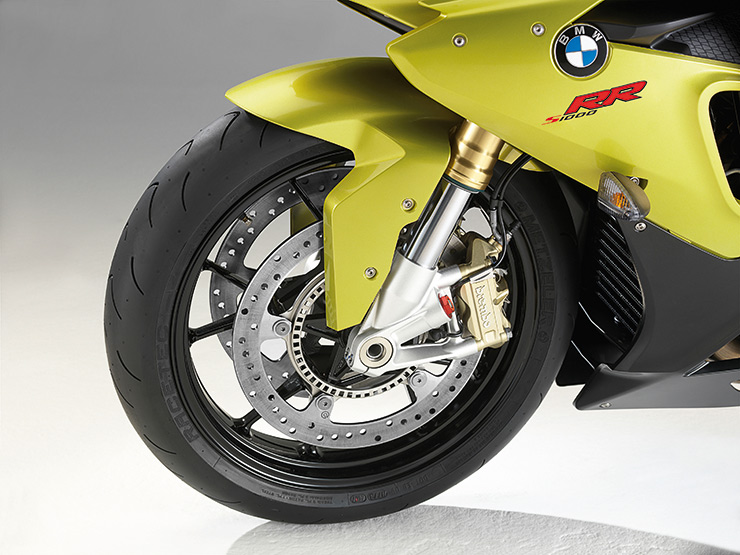
No, it was going to have to come up with something
entirely new, and probably relatively conventional if it
wanted to bring development times back to something
reasonable. And that was exactly what it did a decade ago,
unveiling S 1000 RR. At first glance, the spec sheet read
like a lot of others out there: aluminium frame, USD front
fork, monoshock rear, four-spotter brakes up front,
four-pot powerplant with fuel-injection and a six-speed
transmission with chain drive. Easy.
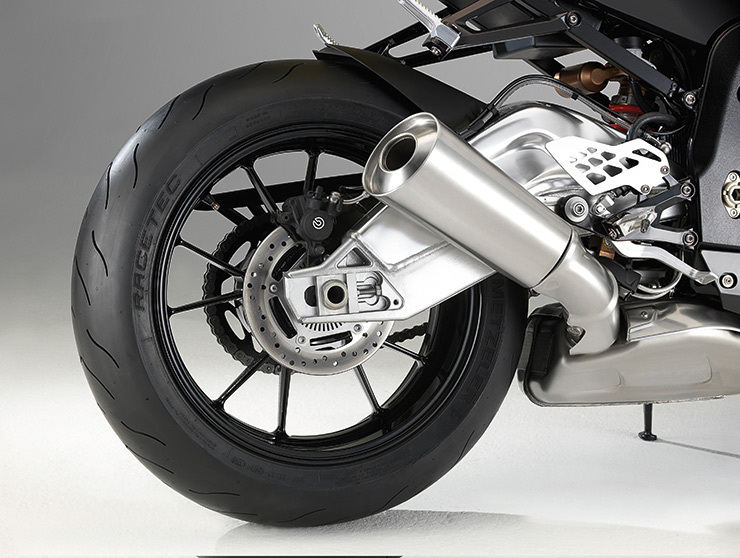
Note there were no tricks in the engine configuration or
orientation. Unlike the first K series, the powerplant was
across the frame and not along it. There were no
Hossack-style Telelever front ends, or Paralever rears. It
had – shock, horror – a humble chain and sprockets.
Reuben Xaus and Troy Corser were to be the superbike
riders and their early results were sometimes promising.
However they never really became a full-time threat to the
more experienced superbike players.
What was far more significant was how quickly the road
bike gained acceptance. It’s hard to imagine a worse time
in the last few decades to launch a new motorcycle. The
global financial crisis was in full swing which meant
that, for example, in 2009 the USA market sank 40 percent
in one year to 520,000 or half what it had been a few
years before. Other big markets such as the UK typically
lost 20 per cent in sales in 2009.
There was BMW launching a super sports motorcycle – a
market niche it hadn’t played in – at a time when overall
sales were plummeting. It was probably a good time to take
up drinking, and whatever they were selling had better be
good.
I blundered into the Australian launch of the model in
early 2010, at Phillip Island race circuit. One of the key
attendees was former Aussie Superbike Champion Steve
Martin, who by that time had enjoyed an extensive
international career. He was one of the key development
riders for both the race and road machines, which he said
at that stage were a lot closer in spec than most people
would expect.
There’s no question that chatting with the development
rider gave you a little more confidence in this whole new
model that you were about to throw a leg over. The bloke
didn’t seem like a suicidal nut and there was no doubt he
knew what he was talking about. Maybe it, the bike he
regarded as his ‘baby’, would be alright. It was.
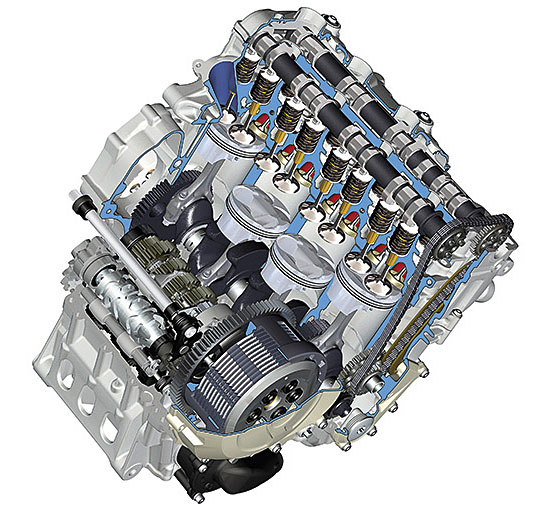
Let’s take a closer look, with the help of my 2010 notes.
BMW at the time said the engine management for the
fuel-injected four was among the fastest/most powerful out
there, adjusting fuelling for individual pots and running
variable fuel pressure in the lines. The throttle itself
was electronic while, at the other end, there were two
sets of electronic valves operating the exhaust. The
first, in the manifold plumbing, was designed to change
the effective ‘shape’ of the system according revs and
demand, while the second-stage was described as an
acoustic valve.
The package was running 13:1 compression in the very
oversquare cylinders, while the rev-limiter kicked in at a
heady 14,200.
There was a six-speed transmission tied to a wet clutch
(with slipper) and chain drive. In Australia, we got the
electronic upshift assist as part of the stock package –
it was an accessory in other markets.
The real showpiece for this bike was, however, the
integrated dynamic traction control (DTC) and Race ABS.
While dial-a-ride electronic aids weren’t new at the time
(Ducati for example was an enthusiastic pioneer), they
were thin on the ground. BMW’s version also raised the bar
considerably for anything within a bull’s roar of the
price range.
The system allowed you to dial in four levels of
performance: rain, sport, race and slick (as in race
slicks). The mildest level dropped the horses back to 153
(114kW) -- you got the full 193 (144kW) back with sport
mode. However the alterations were far more subtle and
comprehensive than just reining in the power. As you moved
up the electronic stages, the throttle response became
more aggressive. At the same time, the level of
intervention from wheelie, ABS and even lean angle sensors
became progressively lower.
BMW did however resist the temptation to throw a version
of its electronic suspension at the S. The reasoning was
the additional complexity and weight didn’t fit where the
bike was going. Fair enough.
What that amounted to was a huge surprise. It was bloody
good. Now that may sound condescending, but bear with me
on this. When you’re confronted with a whole new model in
an area where the manufacturer has no previous history,
like BMW doing super sports bikes a decade ago, you’re
inclined to go a little easy on them. There will be the
odd flaw on a first attempt, which is to be expected.
I wandered away from that launch a little baffled and
concerned. Everything I’d experienced at the Island said
not only was the thing damned good, it was more than
competitive with anything else out there. A big statement?
Yep, and that’s what worried me. What had I missed? As the
reports from other riders on the day rolled in, I started
to feel some relief – that was pretty much their
impression, as well.
In retrospect, it was a remarkable achievement. While BMW
had built fast motorcycles in the past, and some of them
could even be accused of being sporty, this was on a whole
new level for the company – effectively taking the fight
up to the likes of Honda, Ducati and the rest. And
pricing? Coincidentally it was pitched right in the middle
of those two brands, at $25,000 for a bike with all the
electronic aids. That was seriously good value.
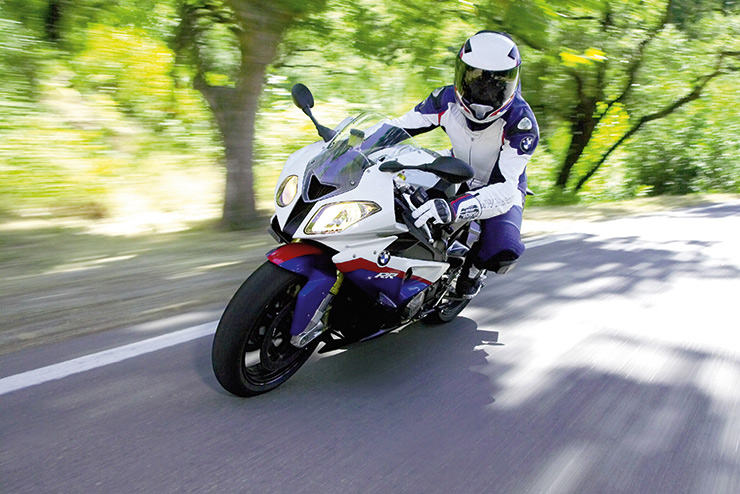
So how has it lasted? Very well. There were a few cases of
a serious engine breakdown (camshafts) quite early,
usually just after the first service, which caused quite a
stir on the web and were quickly dealt with by the
factory. However I would expect anything still in the
second-hand fleet will be sorted by now.
There were breakdowns with race bikes – particularly in
superstock- in the early years (generally gearboxes) and
these were often confused with road bikes, so read any
online alarmist forum postings with a large dose of
scepticism.
With that knowledge, I would not be afraid of something
that now has a few miles on it, so long as it has been
serviced. What you will get is a motorcycle that has quite
phenomenal performance and was a true ground-breaker for
the brand while having an influence on the market as a
whole.
These aren’t really on the collector radar, yet. But
eventually, several years down the track, they will be.
For the time being you’d buy it for fun.
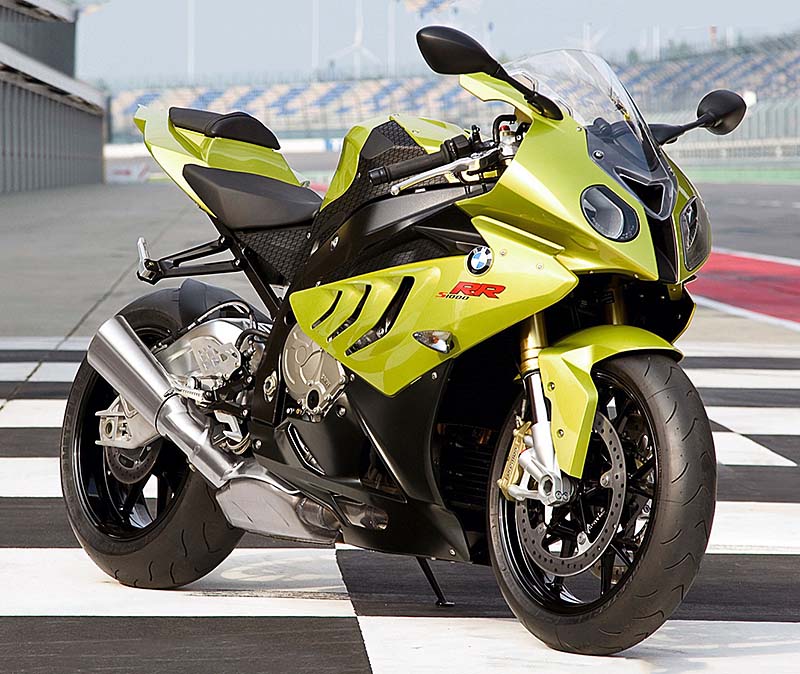
My pick would be a first model in Motorsport livery (white
with the red and blue stripes). However reader Richard
Fitzgerald points out you might wish to consider the Acid
Green, as this was used in much of the launch and
marketing material, plus it was a one-year-only colour.
Prices vary very much according to condition, with what
look like very workable examples around $10-15k. That’s a
lot of bang for your buck.
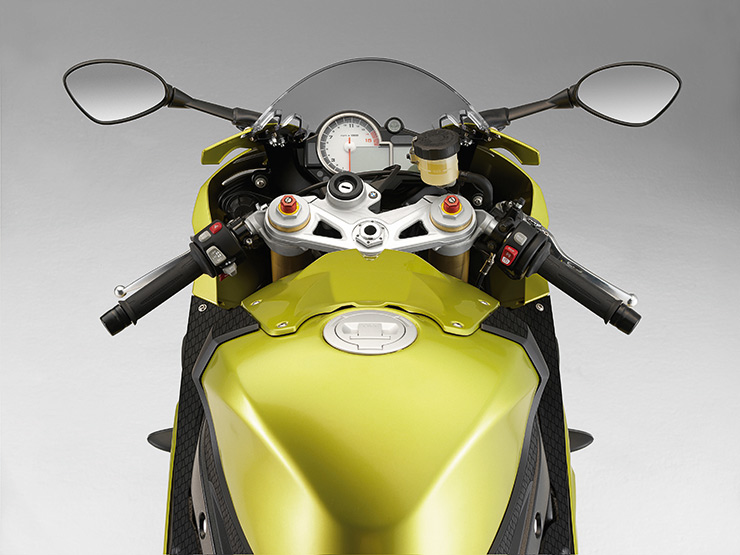
Good
Landmark model
Fast
Electronic aids
Not so good
Forget your pillion
See the Video
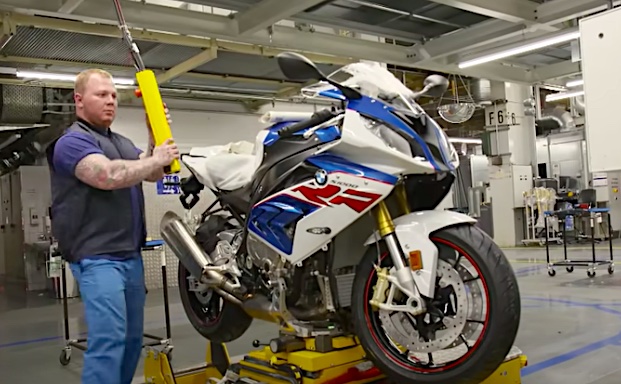
See the factory tour which follows how the S 1000 RR
comes together at the Spandau factory.
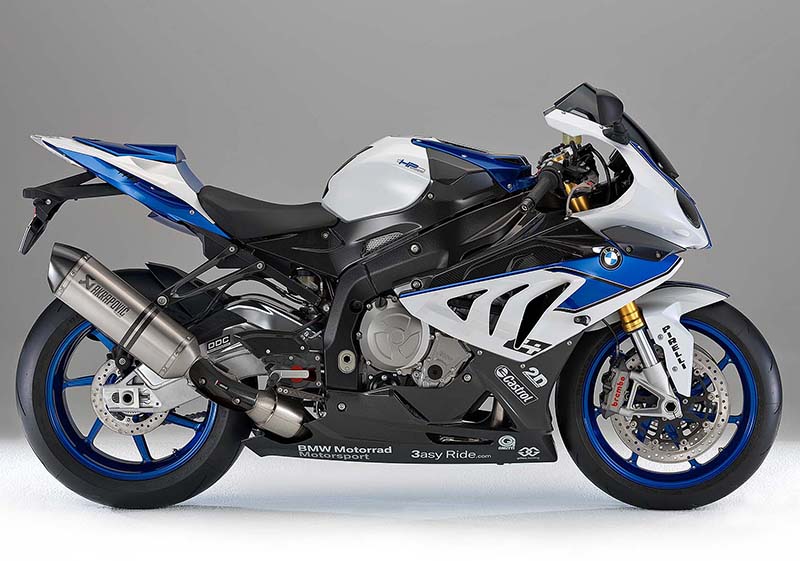
Next gen
The S 1000 RR had a refresh for 2012, including updates to
the engine, chassis and electronics.
An HP4 version (above) was released in late 2012 for the 2013 model year, including semi-active suspension, lighter wheels, launch control and other goodies.
The RR received a significant update in 2015, with changes to most major areas of the design.
A track-only HP4 was released in 2017.
The RR underwent a major rework for 2019. That included a new engine.
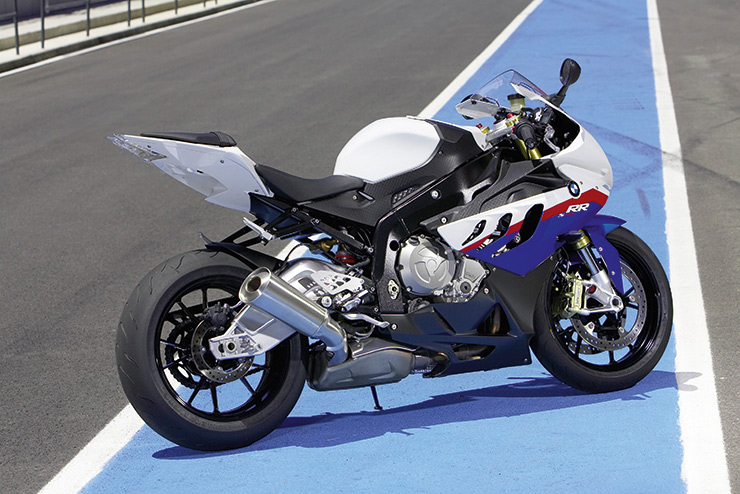
SPECS:
BMW S 1000 RR first-gen (2009-2011)
ENGINE:
TYPE: Liquid-cooled, four-valves-per-cylinder, inline four
CAPACITY: 999cc
BORE & STROKE: 80 x 49.7mm
COMPRESSION RATIO: 11:1
FUEL SYSTEM: Fuel injection
TRANSMISSION:
TYPE: Six-speed, constant-mesh
FINAL DRIVE: Chain
CHASSIS & RUNNING GEAR:
FRAME TYPE: Cast aluminium bridge
FRONT SUSPENSION: 46mm USD fork, full adjustment, 120mm
travel
REAR SUSPENSION: Mono shock, full adjustment, 130mm travel
FRONT BRAKE: 320mm discs with four-piston calipers
REAR BRAKE: 220mm disc with one-piston caliper
DIMENSIONS & CAPACITIES:
WET WEIGHT: 204kg
SEAT HEIGHT: 820mm
WHEELBASE: 1432mm
FUEL CAPACITY: 17.5lt
WHEELS & TYRES:
FRONT: 120/70 ZR17
REAR: 190/55 ZR17
PERFORMANCE:
POWER: 144kW @ 13,000rpm
TORQUE: 112Nm @ 9750rpm
OTHER STUFF:
PRICE WHEN NEW: $24,400 + ORC ($21,900 + ORC with no DTC
or ABS)
-------------------------------------------------
Produced by AllMoto abn 61 400 694 722
Privacy: we do not collect cookies or any other data.
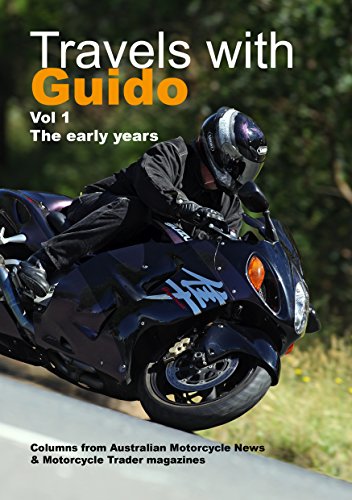
Archives
Contact



